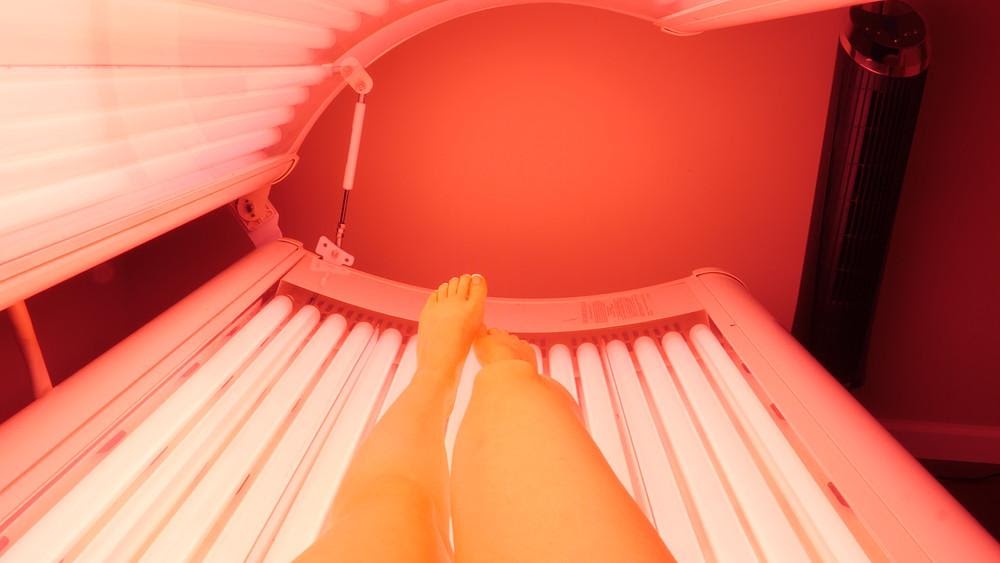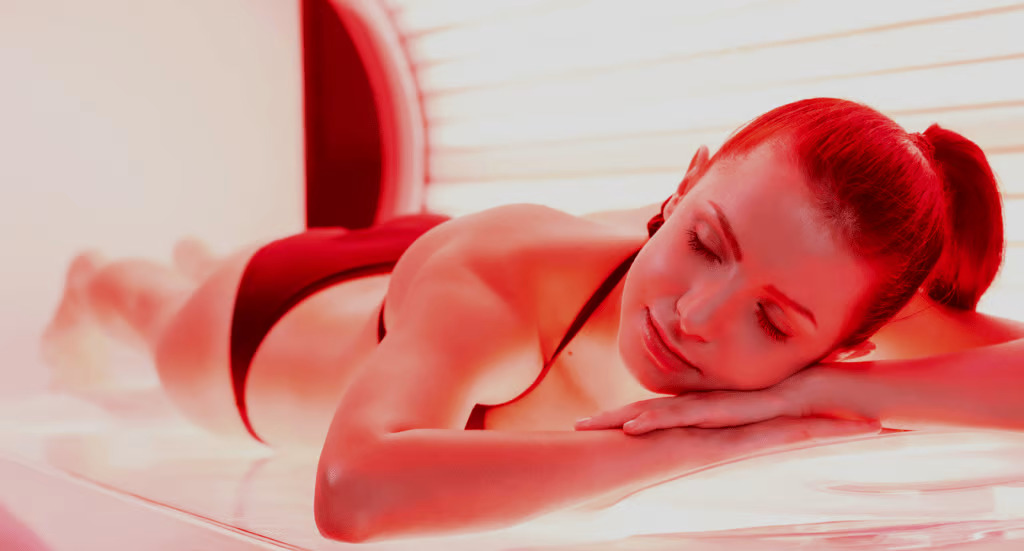We assume that you have undoubtedly heard of red light therapy, whether you are just starting in the world of skincare or are a skincare expert. Numerous tanning salons and aesthetic clinics are using this type of light therapy, and slowly red light tanning beds are taking the world by storm. But are red light tanning beds safe to use, or there are more harmful than UV tanning beds?
If you’re always looking for ways to revive your skin and have a gorgeous glow, then you might be interested in red light tanning therapy and red light tanning beds. Although these tanning beds are used to keep that young glow, are you sure they are 100% safe? Let’s find out.

Source: prismlightpod.com
What Exactly Is Red Light Therapy?
Low-wavelength red light is used in red light therapy to purportedly improve the appearance of your skin, including fading acne scars, wrinkles, and redness. It is also advertised as a treatment for other medical conditions.
Red light therapy (RLT) is a treatment that may aid in the healing of muscle, skin, and other parts of the body.
Salon red light beds are supposed to help minimize cosmetic skin issues, including wrinkles and stretch marks. Red light therapy may be used to treat more issues caused by different health conditions, including psoriasis, slow-healing wounds, and even the negative effects of chemotherapy in a medical office setting.
The usefulness of red light treatment for various health purposes is currently the subject of extensive continuing study, the publication of minor studies, and online discussion. However, there is still much to discover about how it works.
How does red light therapy work?
LEDs that produce particular wavelengths of low-level red and near-infrared light are used to line red light therapy beds.
The light penetrates the skin deeply and is absorbed by cell mitochondria, which are small organelles that produce the majority of the energy used by cells.
Some specialists believe that this helps cells repair themselves and grow healthier. As a result, muscle and skin tissue may repair faster.
Adenosine triphosphate (ATP), an energy-carrying molecule, is produced in greater quantities by the mitochondria when they are exposed to red light.
By accelerating the process of cell repair, this ATP energy gives rise to skin that is smoother, firmer, and less prone to acne and uneven pigmentation.
Red light therapy does not irritate or burn the skin because it employs such low heat levels. It doesn’t expose your skin to harmful UV rays and is not the same type of light used in tanning booths.

Source: trustanalytica.com
Are Red Light Tanning Beds Safe?
Red light tanning beds are still not FDA-approved. If used short-term and according to instructions, red light tanning beds seem to be risk-free and have no known negative effects. Compared to various topical skin treatments, it is far less harsh, non-invasive, and less harmful. However, there’s still not enough evidence that fully supports the claim that red light tanning beds are safe. Some even call for red light tanning beds as unsafe due to the slightest emission of UV lights.
It doesn’t call for the use of abrasive topical agents or high temperatures, which can irritate or burn the skin. However, if products are misused, e.g., by using them too frequently or not following guidelines, your skin or eyes (if not protected) may be harmed.
Additionally, the greatest danger is falling asleep under the light and sustaining burns; thus, it is recommended that you do not spend more time in bed than necessary.
The best course of action for you is to consult a dermatologist or a licensed, experienced cosmetic therapist.
Benefits and Usage of Red Light Therapy Beds
Red light therapy beds have various benefits for the skin. Since they expose the entire body to low-level light, they’re especially effective for people whose skin problems don’t just affect the face.
May reduce aging signs
The use of red light treatment has several anti-aging benefits. It raises levels of collagen and elastin, two proteins essential for skin suppleness and firmness.
The appearance of loose, sagging skin can be treated and avoided by increasing the body’s levels of collagen and elastin. Additionally, the procedure may improve blood flow to the skin tissue and lower oxidative stress, preventing damage and enhancing skin health in general.
Hyperpigmentation might be reduced
When skin cells are harmed or irritated, an excessively high amount of melanin is produced, resulting in hyperpigmentation, which results in dark spots or patches of skin. Age spots, sunspots, melasma, and post-inflammatory hyperpigmentation (PIH) are typical forms of hyperpigmentation.
Red light therapy may lower oxidative stress and inflammation, promote cell repair, and regulate the production of melanin. This treatment, along with regular exfoliation, might help lighten dark patches on the skin.
Acne treatment
This treatment has been demonstrated to reduce skin oil production and improve acne blemishes. It works best when combined with blue light therapy.
Additional benefits
In addition to helping the skin, this therapy may also have other benefits. This treatment may reduce muscle aches, increase wound healing, and prevent hair loss. It also has the potential to be used, so it may treat a wide variety of conditions, including obesity and spinal cord injuries.
Conclusion
So, are red light tanning beds safe? Yes, a red light tanning bed is a safe and potentially very effective treatment option for those looking for more subtle skin changes, to maintain healthy skin, or to reduce inflammation.
With this therapy, you may get rid of acne, fine wrinkles, sun damage, hyperpigmentation, and other skin issues. It’s a safe, efficient treatment with hardly any side effects.
RLT is just one component of a thorough skin care regimen, and it shouldn’t be used as the sole method of skin care. For an individual to start experiencing improvements in their skin, it can take a few RLT sessions.
Anyone unsure whether the treatment is right for them should speak with a doctor to go over the potential benefits.

Hello! I’m Nicky Rodgers.
Almost a decade ago, I got excited about the idea of employing alternative methods like red light therapy to create a healthier life.
To learn more about it, I did my Certified Light Therapist course from Photonic Therapy Institute and started looking into the intricacies of how light therapy influences several bodily processes. Before I knew it, my interest had become an obsession which resulted in this extensive blog.
Here, I offer countless well-researched articles to help you understand the benefits and uses of light therapy. I hope this information gives you a head start in your wellness journey.
